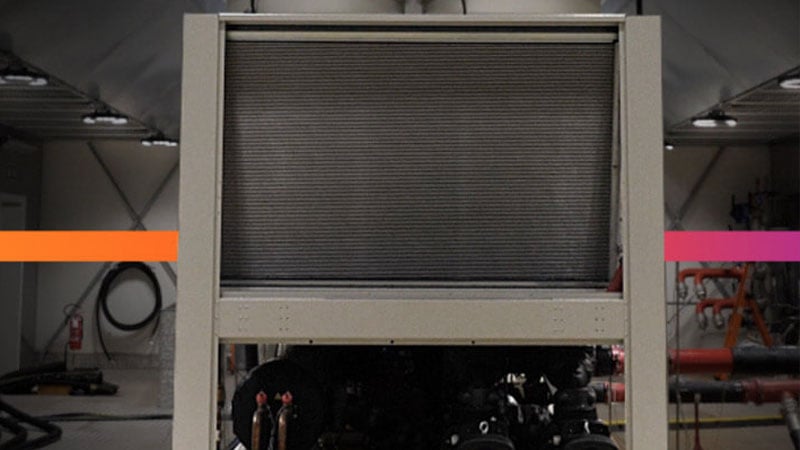As artificial intelligence reshapes industries globally, Brazil’s data center market is becoming a key player in this transformation. Meeting AI’s demands requires innovative designs that balance performance, scalability and sustainability. These requirements go beyond the IT stack – the same issues also impact the critical digital infrastructure providing power and cooling for the high-performance computing. Emerging sites require liquid cooling to remove heat at the chipand higher power densities to support the compute. Applications will include:
- Training, wherein models are built and expanded over based on a set of data and information, and
- Inference, wherein the existing models generate an answer - i.e., answering users’ queries.
A recent study predicted that training and deploying generative AI models will cost US$ 76 billion by 2028. By 2025, data generation will have grown by more than 180 zettabytes (ZB), with data storage projected to grow at a compound annual growth rate (CAGR) of nearly 20% over five years, according to Statista. IDC further projects that global spending on public cloud services will reach $1.35 trillion by 2027, also a CAGR of about 20% over the same period. This rapid growth underscores the symbiotic relationship between cloud expansion and the rise of AI applications. The scalability of cloud computing is crucial to meeting the demands of AI workloads, which increasingly require high-density infrastructure, seamless scalability and innovative energy management solutions. For data centers, these trends translate into a pressing need to adopt advanced cooling systems, scalable power management technologies and modular designs capable of supporting the growing demands of AI driven environments.
Proliferation of Brazilian data centers
There are currently 146 data centers in Brazil (Data Center Map). According to the Data Centers in Brazil report (by JLL), the number of data centers in the country has grown 628% between 2013 and 2023.
As this expansion continues, it has become essential to design expansions of existing data centers or flexibly construct new sites by welcoming new energy efficient and highly available technologies and developments. There are several reasons for this necessary shift.
AI and Energy Demand
According to a Goldman Sachs study, a query on ChatGPT, which uses an extensive database, can consume 10 times more power than a Google search. The proliferation of AI and the associated increase in energy demand poses a challenge as companies strive to increase efficiencies and limit environmental impact.
While innovations are ongoing, there are already power and cooling technologies that provide the availability and energy efficiency of the data center of the AI era, ready for today and tomorrow:
- UPS batteries: Advances in battery technology can be a strategic tool for improving an AI facility's power density and thermal stability. In addition to the popular and energy efficient lithium-ion battery technology, relative newcomer nickel-zinc (NiZn) batteries provide industry-leading power density and operate over a broader range of temperatures - without thermal runaway. This explains why the nickel-zinc rechargeable battery market is projected to grow at a CAGR of 24.4% from 2024 to 2030.
- Direct liquid cooling systems (DLC): According to Dell’Oro’s Data Center Liquid Cooling Report July 2024, the worldwide data center liquid cooling market was at US$ 745 million in 2023, and is expected to eclipse US$ 3 billion by 2026. A direct-to-chip liquid cooling system resembles a standard rack but includes a manifold for distributing liquid to IT equipment (ITE). This applies to servers, routers, and other devices enabled for direct-to-chip cooling. However, horizontal tanks replace the standard rack design in an immersion cooling system. In this data center design, the ITE is immersed in a thermally conductive dielectric liquid or fluid (a fluid that is not electrically conductive). The superior thermal performance of liquids compared to air ensures that the data center's operational sustainability credentials increase significantly. Direct liquid cooling requires high density rack PDUs, heavy duty racks – critical to support the weight of the larger ITE and fluid in the racks. In-rack coolant distribution units (CDUs) are a potential option, depending on the application.
- Modular data centers: Another strategy to consider when designing future data centers is using prefabricated modular data centers, focusing on scalability and speed of deployment. This entails building data centers in smaller building blocks, starting to operate with what is already running while investing in the construction of the next module. Omdia's research shows that modular facility revenues reached approximately US$4.8B in 2023. Modular data centers are expected to grow by an average of 22% annually until 2026, projecting a market of US$ 8.8 billion. This approach reduces upfront investment and minimizes the time it takes to generate revenue. Traditional brick-and-mortar data centers take from 18 months to 2 years to be up and running. With a modular data center, achieving a reduction in design, manufacturing and deployment time is possible.
The brazilian digital economy and local data centers are at the threshold of a new era of transformation. With the rise of AI, this moment is full of opportunities but also brings new challenges. Many companies are working to add AI capacity to existing operations, while others planning new facilities are evaluating how much AI capacity should be integrated into their designs. Simplifying this process starts with collaborating with AI development leaders who offer proven expertise.
It requires not just advanced technology but a partner with a comprehensive understanding of the entire power train and thermal chain, and the ability to guide operators in maintaining operational continuity and addressing long-term maintenance needs. Collaborating from planning through to the end of the equipment lifecycle can help create adaptable infrastructure models aligned with industry best practices. This is critical for positioning Brazil’s data centers as global leaders in AI data processing by the end of the decade.






